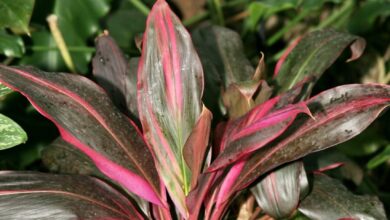Yellow leaves on the prayer plant: how to fix the yellow maranta foliage
The foliage of the prayer plant, oval in shape and with a beautiful pattern, has earned it a special place among houseplants. Home gardeners love these plants, sometimes too much. When prayer plants turn yellow, it is often due to environmental problems, but some diseases and pests can also be responsible. If your prayer plant is yellowing, read on to find out the causes and possible treatments.
What causes yellow leaves on prayer plants
Environmental stress
The most common problems with Maranta prayer plants are due to poor maintenance. Bright light or an excess of phosphate or fluoride can cause burning of the tip and edges of the leaves, leaving a band of yellow tissue between healthy and dead tissue. Chlorosis causes yellowing of the foliage of the prayer plant, especially on the younger leaves.
Move your plant to an area with indirect light and start watering it with purified water. A dose of liquid ferrous fertilizer mixed according to the package instructions can help correct chlorosis, provided the pH of your medium is about 6.0. A soil test may be necessary or it may be time to replant.
Fungal disease
Helminthosporium leaf spot is a fungal disease that causes small water-soaked spots to appear on the leaves of prayer plants. These spots quickly turn yellow and spread, eventually becoming tanned areas with yellow halos. This fungus sets in when plants are chronically overwatered and leaves are frequently covered with stagnant water.
Correct the watering problem to eliminate the future risk of disease and water only at the base of the plant in the morning, so that water evaporates quickly from splashed surfaces. An application of neem oil or chlorothalonil fungicide can kill active diseases, but prevention of future outbreaks is vital.
Cucumber mosaic virus
Cucumber mosaic virus may be responsible for the yellowing of Maranta leaves, especially if the yellowing alternates with the otherwise healthy green tissue. New leaves may emerge small and deformed, old leaves develop patterns of yellow lines on their surface. Unfortunately, there is nothing that can be done against plant viruses. It is best to destroy your plant to prevent other houseplants from contracting the virus.

